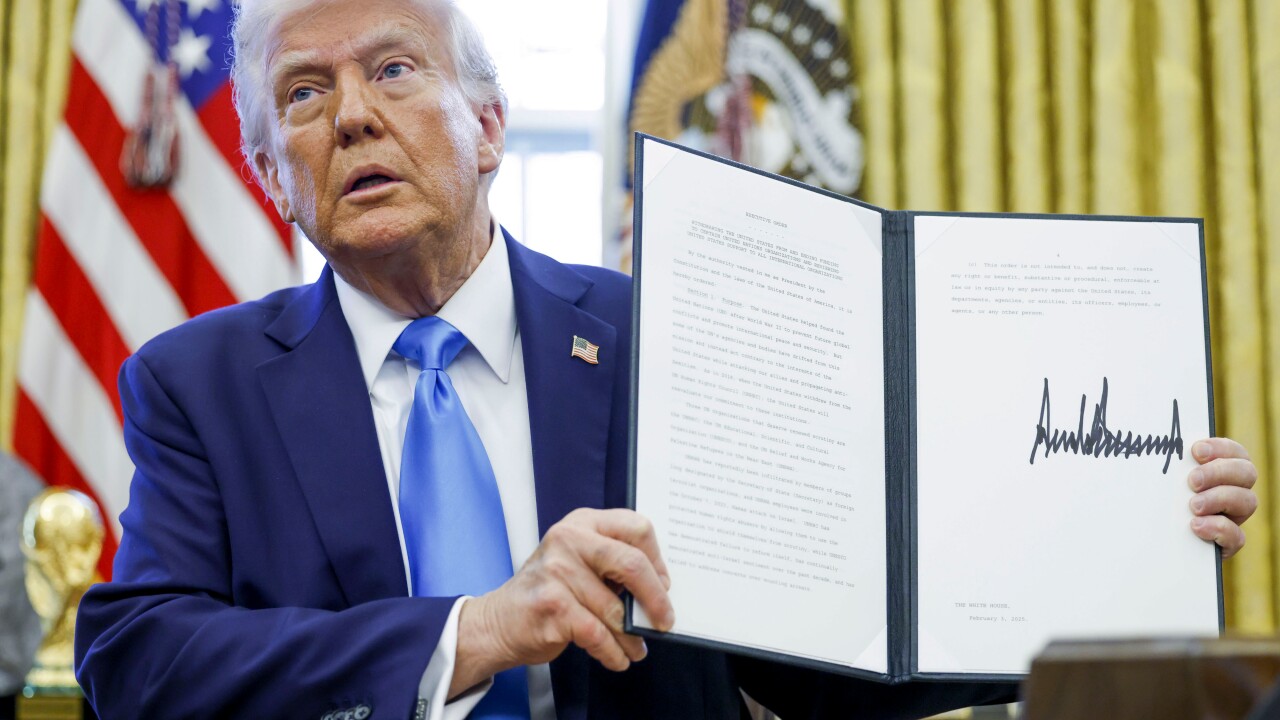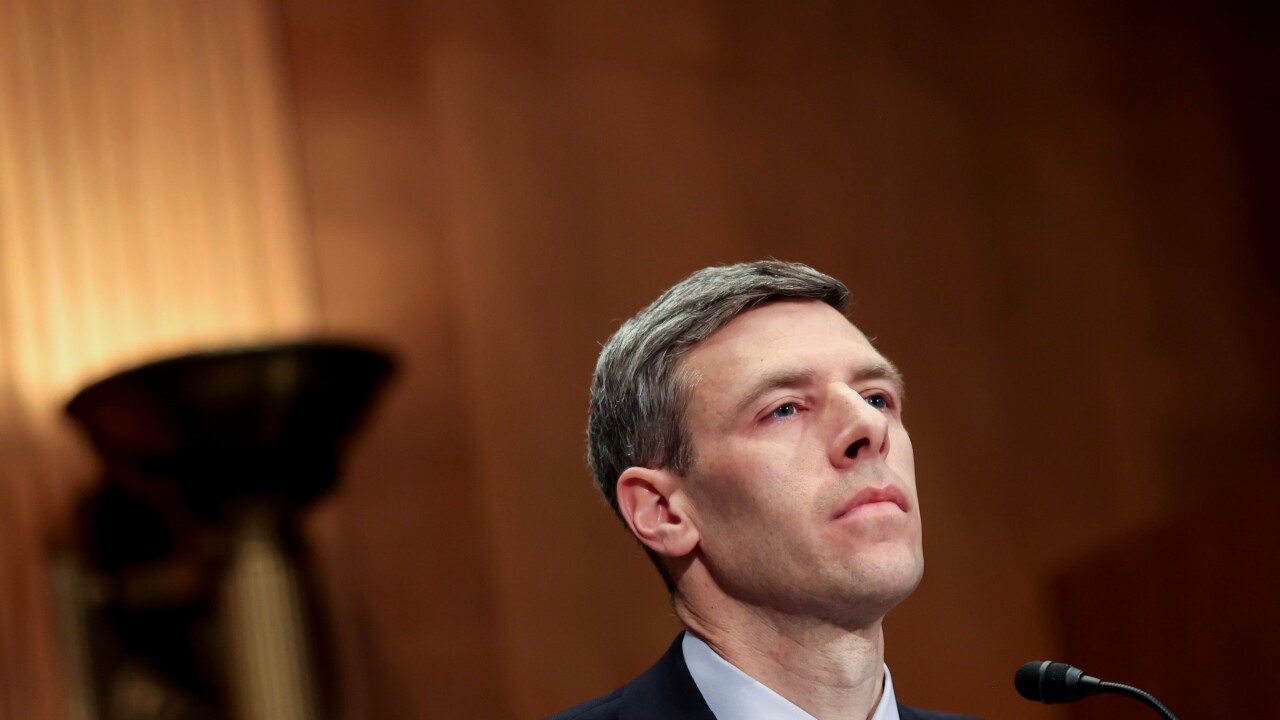-
What mobile trends do bankers and analysts expect to see unfold not only in the coming year, but farther out? How are banks responding to these trends and what new mobile features offer the most promise? Join the evolution toward a more mobile future.
March 1 -
While the "mobile wallet" has become an industry catchphrase, it remains to be seen whether banks can profit from it or if customers even want it.
February 25
A few years ago, banks were packing their mobile apps with features, and Jason Malo wondered how much more could fit. He began asking bankers a question: Would they consider a multi-app strategy?
The answer was uniformly "no," says Malo, a research director specializing in digital banking for CEB TowerGroup in Arlington, Va.
But with banks eagerly looking for the next cool thing in mobile, and other industries experimenting, Malo says it's a question worth asking again.
"The fact that there is this test bed, if you will, or that a lot of organizations are trying to figure out the best ways to deliver solutions to consumers, there's an opportunity to learn and innovate," Malo says.
Apple is one company highlighting potential directions. In June, the tech giant unveiled an app called HealthKit, which people can use to centralize data about their well-being.
"I think inevitably you're going to see financial dimensions come out of that," says Jim Tobin, senior vice president and general manager for digital channels at Atlanta-based Fiserv. He cites connections between health-monitoring services and health-related expenses, such as insurance premiums and gym memberships.
Retail property and casualty insurers, meanwhile, often offer several apps, some linked directly to insurance needs, others less so. The apps allow customers to inventory household goods, organize a move or shop for a car, among other tasks. Progressive Insurance even offers mobile games built around a character in its TV ads, Flo. In one, Superstore Shuffle, players score points by guiding customers through insurance shopping.
Insurers turn to multiple apps to increase contact with their customers, observers say. Banks generally enjoy more frequent customer interaction, but they could benefit from a mobile approach that is similar to the insurance companies, says Steven Ramirez, CEO of Beyond the Arc, a customer analytics company in Berkeley, Calif.
"Banks have an opportunity to use mobile to express their brand, to basically kind of strengthen the brand," Ramirez says. "And brand becomes a differentiator in a very crowded commodity market. A portfolio of mobile apps could help them stand out."
Just don't browse app stores in search of games like "Angry Bankers" any time soon. As banks experiment, they are more likely to stick with apps that are closely linked to their customers' finances, according to bankers, consultants and software developers.
Some likely will be core transactional apps tailored to specific customer groups, such as small businesses or high-net-worth individuals. Others could sit alongside a bank's main app and serve specific purposes tied to smarter money management. For example, banks might deploy an app to help customers decide, at the point of purchase, what payment method is best.
"We don't want to clutter the environment, but when the use case is really compelling, it might make sense," says Dominic Venturo, chief innovation officer for the $371 billion-asset U.S. Bank. The Minneapolis-based bank began
testing one use case in mid-May. It gave select customers a bank-built app called "Find US Offers," which delivers real-time deals available at restaurants and other businesses in downtown Minneapolis, Venturo says. The offers are the digital equivalent of sidewalk chalkboards hawking daily specials, but can reach people in a wider area.
Venturo wouldn't say how many customers were involved in the 90-day pilot. But he says about 20 companies offered deals in the first week. "Part of what we're trying to understand is, 'Is that what our customers want in their banking app, or would they want this to be a separate app?'" Venturo says.
While some standalone apps will be built by banks, others could be sold by third-party providers. One example is a business valuation app developed by a Pennsylvania company called BizEquity and being used by several community banks. The app, available for tablets but not smartphones, allows small-business owners to estimate their company's value through a data-entry process akin to TurboTax, says Michael Carter, CEO of BizEquity.
Each business user is charged a $365 fee. That covers a valuation report and a one-year subscription to the BizEquity app, which can be used to update the valuations.
Banks, which are generally expected to make the app available at no cost to their customers, get a discount on the per-user fee ranging from 10% to 50%. The more businesses they sign up, the greater the discount.
Fox Chase Bank in Hatboro, Pa., began using BizEquity this summer. It was weighing its pricing model as of early June, but expected to make it a complementary service for customers, according to Tom Petro, president and CEO of the $1.1 billion-asset bank.
The bank envisions several uses for the app, both internally and externally. Lenders could use BizEquity's valuation reports to supplement existing credit information on business borrowers, Petro says. The reports also could help generate conversations with customers about how their decisions could increase or decrease a company's value.
Customers likely will be able to access the app through Fox Chase's website and use it themselves, Petro adds. But the bank was still working through compliance issues.
In the meantime, Petro says, the app has fired up the imagination of Fox Chase executives. "We don't have any other specific apps that we are pursuing at this time, but there are a range of possibilities that this has awakened us to," Petro says. "And I would expect, really, that you would see, broadly, banks adopting multiple-app platforms, each of which are driving some unique kind of value proposition or vertical that the banks are attempting to serve."





